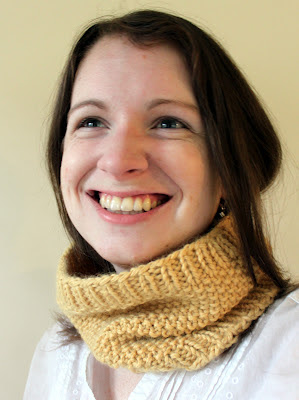The cowl was designed with two things in mind: to showcase the beauty of the yarn and to produce a big squishy cowl that uses as much of the skein as possible. With less than 2 yards of leftover yarn, I'm pretty sure I succeeded in at least one of these goals. This project is a simple, quick, and luxurious knit, and I'm looking forward to wearing this soft fabric against my skin once it gets cold. With autumn just around the corner, perhaps you should knit one too!
To make this cowl, you'll need:
- 1 skein of Misti Alpaca Chunky (108 yards, bulky weight); colorway 1110 shown here.
- A set of US 10 / 6 mm circulars or double points
The finished cowl measures 21 inches around with a gauge of 13 st/25 rows = 4 inches in seed stitch.
PATTERN:
Cast on 72 stitches. Join to work in the round, being careful not to twist.
Border:
Round 1: [K1, P1] to end.
Repeat this round 4 more times.
Next round: [K1, P1] to 2 st from end, K2tog. (71 st)
Main Section:
Round 1: [P1, K1] to 1 st from end, P1.
Round 2: [K1, P1] to 1 st from end, K1.
Repeat rounds one and two 16 more times.
Round 35: [P1, K1] to 1 st from end, P1, M1. (72 st)
Border:
Round 1: [K1, P1] to end.
Repeat this round 4 more times.
Cast off. Weave in ends.
Questions or errata? Contact me at brineydeepdesigns_at_gmail_dot_com!











